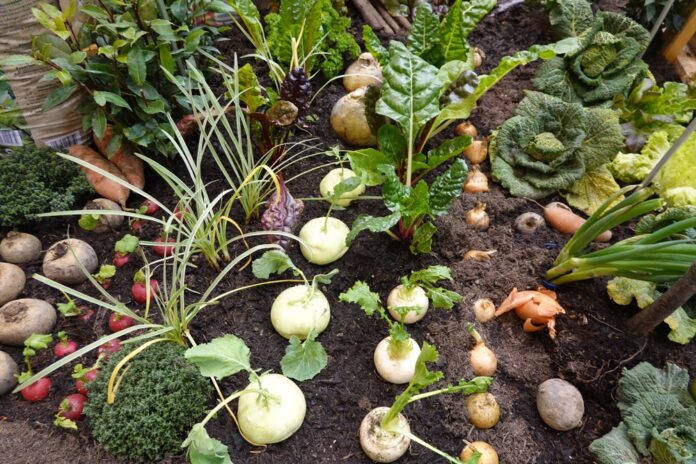Gardening is not just about planting seeds and watching them grow; it’s about creating a harmonious ecosystem where plants support one another. One of the most effective ways to achieve a thriving garden is through companion planting—an age-old technique that enhances growth, repels pests naturally, and optimizes yields.
Understanding Companion Planting
Companion planting involves strategically placing plants together so they can benefit each other. This method leverages the natural properties of plants to improve soil fertility, attract beneficial insects, and repel pests, leading to healthier plants and bountiful harvests.
The Historical Roots: The Three Sisters Method
One classic example of companion planting is the “Three Sisters” technique, practiced by Indigenous American tribes for over 3,000 years. This method involves planting corn, beans, and squash together. The corn acts as a natural trellis for the climbing beans, which in turn enrich the soil with nitrogen. Squash sprawls along the ground, suppressing weeds and retaining soil moisture with its large leaves. This symbiotic relationship maximizes space and yield through mutual benefits.
Benefits of Companion Planting
- Natural Pest Control: Certain plants repel harmful insects, reducing the need for chemical pesticides. For instance, marigolds planted alongside vegetables can deter nematodes and other pests.
- Improved Soil Fertility: Legumes like beans and peas fix nitrogen in the soil, providing essential nutrients for neighboring plants.
- Enhanced Biodiversity: A diverse garden attracts beneficial insects and promotes a balanced ecosystem.
- Weed Suppression: Ground-covering plants like squash can prevent weed growth by shading the soil.
- Optimized Space: By pairing tall, sun-loving plants with shorter, shade-tolerant ones, you can maximize your garden space.
Effective Companion Planting Combinations
Tomatoes and Basil
Planting basil next to tomatoes not only enhances the flavor of the tomatoes but also helps repel insects like aphids and whiteflies.
Carrots and Onions
Onions can deter carrot flies, while carrots may repel onion flies, making them excellent companions.
Lettuce and Radishes
Lettuce provides shade for radishes, preventing them from bolting. In return, radishes can break up the soil, allowing lettuce roots to penetrate more deeply.
Cucumbers and Nasturtiums
Nasturtiums act as a trap crop for aphids, luring them away from cucumbers. They also attract predatory insects that feed on common garden pests.
Peppers and Marigolds
Marigolds release compounds into the soil that can suppress harmful nematodes, benefiting pepper plants.
Tips for Successful Companion Planting
- Plan Your Garden Layout: Consider the growth habits and space requirements of your plants. Tall plants can provide shade for those that need less sunlight.
- Know Plant Compatibilities: Some plants don’t grow well together. For example, keep beans away from onions and garlic.
- Practice Crop Rotation: Rotating crops yearly prevents soil depletion and reduces pest buildup.
- Attract Beneficial Insects: Plant flowers like lavender, borage, and sunflowers to attract pollinators and predatory insects.
Avoiding Incompatible Pairings
While companion planting offers numerous benefits, some plant combinations can be detrimental. For example, planting tomatoes near potatoes can increase the risk of blight affecting both crops. Similarly, certain plants release chemicals that inhibit the growth of others, a phenomenon known as allelopathy. An example is black walnut trees producing juglone, which can harm many vegetable plants.
Embracing Biodiversity in Your Garden
Creating a diverse garden not only boosts plant health but also contributes to a resilient ecosystem. Incorporating herbs, flowers, and cover crops can enhance soil health and attract a variety of beneficial organisms.
Conclusion
Companion planting is a powerful tool for any gardener aiming to maximize yields and maintain a healthy garden ecosystem. By understanding the relationships between plants and strategically planning your garden, you can create a thriving, sustainable environment that reduces the need for chemicals and increases productivity.
Start small, experiment with different plant combinations, and observe how they interact in your unique garden setting. Over time, you’ll unlock the full potential of your garden through the natural synergy of companion planting.


